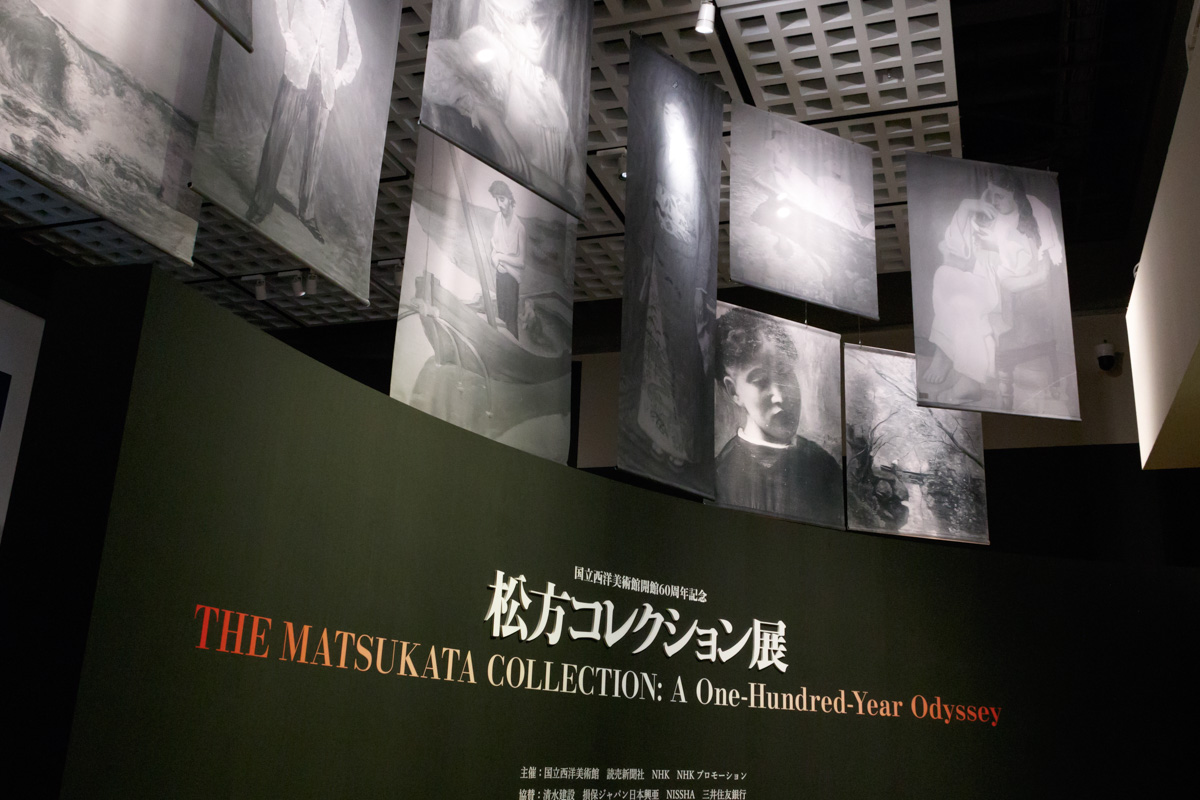
The National Museum of Western Art, Ueno, Tokyo, from June 11, 2019 (Tuesday) to September 23, Mon.
"The 60th Anniversary Matsukata Collection Exhibition of the National Museum of Western Art"
Is being held.
Since the press preview of the exhibition was held, we will deliver the report this time.
What is the Matsukata Collection?
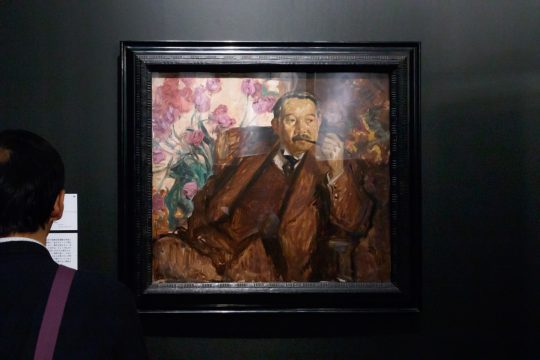
Frank Blanwyn <Portrait of Kojiro Matsukata> 1916 Collection of the National Museum of Western Art, donated by Kojiro Matsukata
Kojiro Matsukata (1866-1950), the businessman who laid the foundation for the collection of the National Museum of Western Art.
Matsukata, who led the Kawasaki Shipyard (now Kawasaki Heavy Industries, Ltd.) in Kobe, expanded a large number of works of art in London and Paris around 1916-1927, expanding business against the backdrop of ship demand from World War I. I was buying it. The collection at that time was more than 3,000 pieces from Monet, Gogan, Gogh's paintings, Rodin's modern works such as sculptures, medieval board drawings and tapestry.
"I want to make an art museum for Japanese people"
The works collected from such thoughts are the Matsukata collection.
This exhibition traces the process of formation and dissipation of the Matsukata Collection and the establishment of the National Museum of Western Art with about 160 valuable works of art and historical materials. The ten chapters from prologue to epilogue will convey to us the thoughts of Matsukata, who bet life for collection.
Highlights of the Matsukata Collection
The highlights of this exhibition are roughly divided into three.
The first one is the display of a collection of masterpieces of the former Matsukata, which has been scattered around the world, including Vincent van Gogh's Bedroom in Arles (1889).
The second is that Matsukata purchased directly in the atelier in Monet, and for the first time it will be unveiled after rehabilitating the long-lived masterpiece, “The reflection of water lily and willow” (1916).
The third is that when the Matsukata Collection was kept in the old chapel of the Rodin Museum, 16 of the 365 glass plates photographed by the French photographer Pierre Schmoff were unveiled as historical material It is
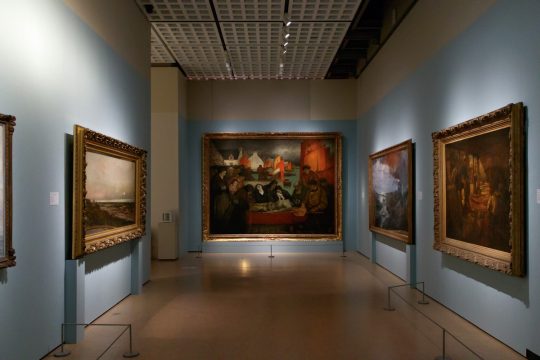
exhibition hall
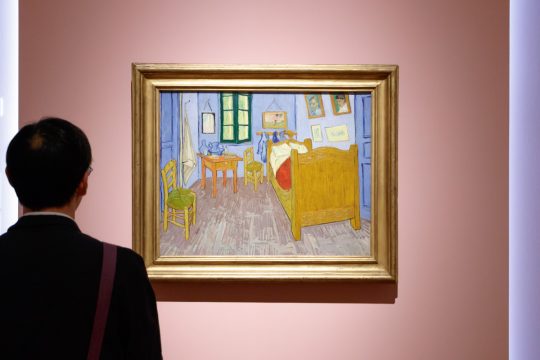
Vincent van Gogh << Arru's Bedroom >> 1889 oil on canvas 57.5 x 74 cm Orsay Museum, Paris

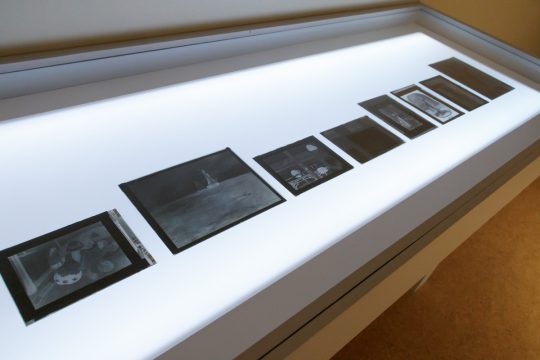
A glass-dried version of the Matsukata collection taken at the age of the Rodin Museum of Art (Photographed by Pierre Schumoff) Mediatheque, an architectural and cultural property in France
"Water lily, reflection of willow" work hard work restoration and future prospects
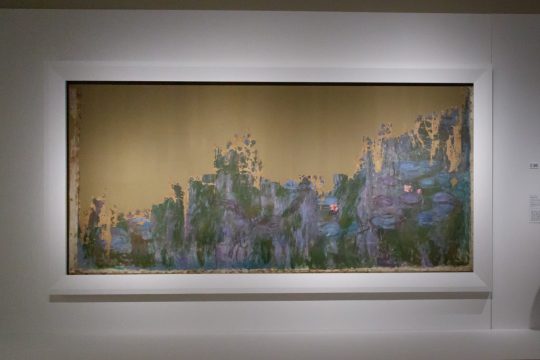
Claude Monet <Water lily, reflection of willow> 1916 Oil on canvas 199.3 × 424.4 cm (upper deletion) National Museum of Western Art, Tokyo (Konjiro Matsukata, donated by the bereaved family)
Among the three highlights, the most eye-catching piece is Claude Monet's Water Lilies and Willow Reflections .
This is a very large-scale work that uses a decorative technique that is reminiscent of a Japanese maple picture, showing that a willow tree is reflected upside down on the water surface of a water lily pond. It is rare that the work before repair is so damaged.
"During the World War II, he escaped the search for the Nazis and evacuated his work to the farmers during the Second World War, and he kept it upside down and saved it. Then, it was guessed.
In the case of this work, originally it took three to four years to repair, but because the restoration period is as short as one year, it is said that the restoration is limited to the minimum. It is heavy because it is a very large work, and just turning over the work required a large number of seven people and it was hard work.
In addition, Mr. Tochigi concluded that "I would like to work on repairing Monet works in the long run while comparing and examining other Monet's water lily series in the future" .
Introduction of exhibited works
Vincent van Gogh < rose>
1889 oil on canvas, 33 x 41.3 cm National Museum of Western Art, Tokyo
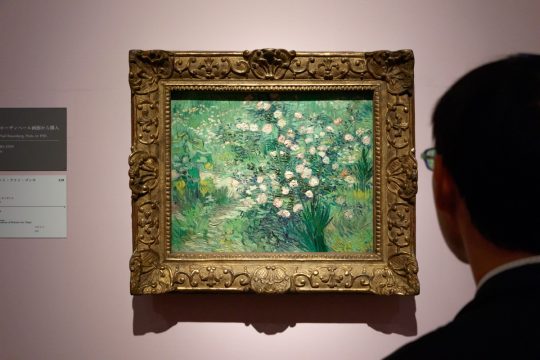
A work in which Gogh, who suffered from mental illness, drew nearby roses while hospitalized at the Saint-Remy Psychiatric Hospital. Vibrant, lively roses are drawn with intense brush strokes.
Not only the texture of the rose, but also the smell seems to be felt.
Camille Pissarro < harvest>
1882 Glossy Tempera, Canvas 70.3 × 126 cm National Museum of Western Art, Tokyo (Konjiro Matsukata, donated by the bereaved family)
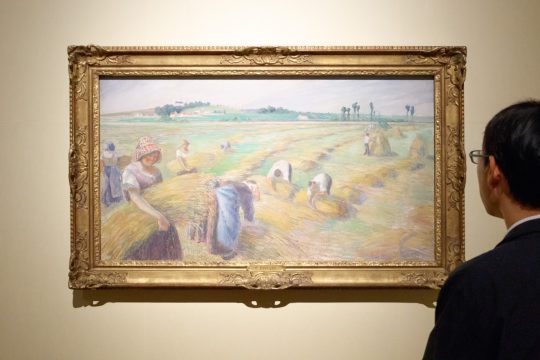
This work is a work that became a milestone of Pissarro, which challenged the material of glue tempera and shifted from a traditional landscape painter to a portrait painter. People who have only been drawn as companions will now be drawn on the front. You will be fascinated by the spacious countryside, where you can see the houses beyond.
I can hear the texture of the wheat flowing by the wind and the breath of people who work.
Edvard Munch < workers in the snow>
1910 oil on canvas, 223.5 x 162 cm private collection, Tokyo (deposited at the National Museum of Western Art)
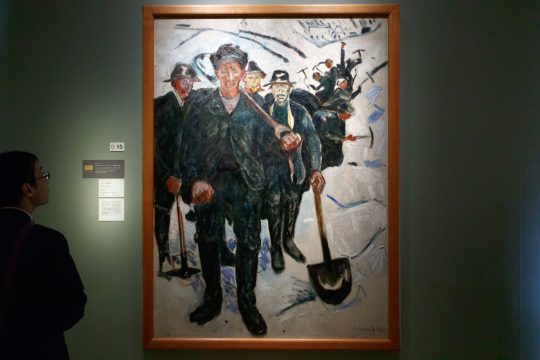
It is a painting drawn by the late-year Munch. Workers working in harsh conditions under deep snow. Three men who carry scoops on their shoulders and stabs in the snow on their fronts, and who look at this with a proud look. Behind them, people who work silently are vividly depicted.
There is no darkness in each figure, but rather, even brightness can be felt.
Charles-François Daubigny < Villareville coast, sunset>
1870 oil on canvas 100 × 197 cm Sumitomo Mitsui Banking Corporation, Tokyo

The work of the late-year work of the landscape painter Barbison.
The sound of the waves flowing quietly in the big ocean and the sunset sky. The scenery and the figures of the people walking on the beach are impressive. People can only look small, but what kind of expression is it? Do you have a bright face after work?
I can stir my imagination.
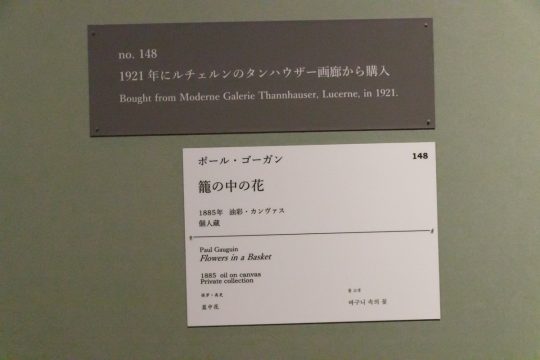
The Matsukata collection, which has been lost due to the Great Kanto Earthquake and the Showa Financial Crisis, and has been pursuing a strange fate.
The captions of the exhibitions in this exhibition carefully describe when and where the works were purchased, and are designed so that you can know the history of the transition.
Matsujiro Kojiro's dream of "I want to create an art museum for Japan" that has come to fruition after decades of age.
Why don't you come to the venue and try to touch one end of that feeling?
Outline of the event
| Exhibition name | Matsukata Collection Exhibition commemorating the 60th anniversary of the National Museum of Western Art |
| Session | June 11 (Tuesday)-September 23 (Mon.), 2019 9: 30-17: 00 (30 minutes before closing) (However, open on Fridays and Saturdays until 21:00) |
| closing day | Closed Monday and July 16 (Tuesday). ※ Opened on July 15 (Mon., Holiday), August 12 (Mon., Closed), September 16 (Mon., Holiday), September 23 (Mon., Holiday). |
| Venue | National Museum of Western Art (Ueno Park) |
| Fee for viewing | General 1600 yen (1400 yen), university student 1200 yen (1000 yen), high school student 800 yen (600 yen) ※ free for junior high school students ※ () is group rate of 20 or more ※ The disabled person and one carer are free. It is necessary to present handicapped person's certificate etc. at the time of admission. |
| Official site | https://artexhibition.jp/matsukata2019/ |


